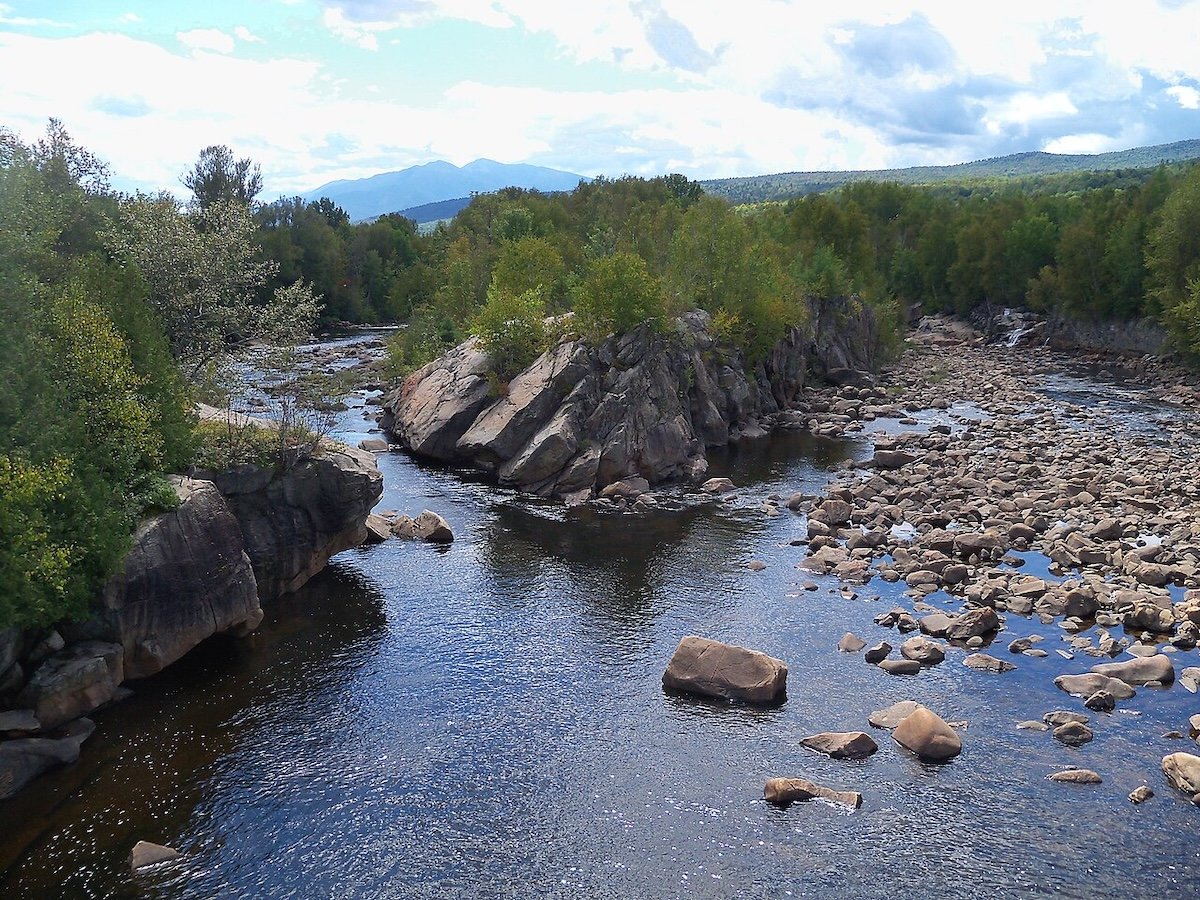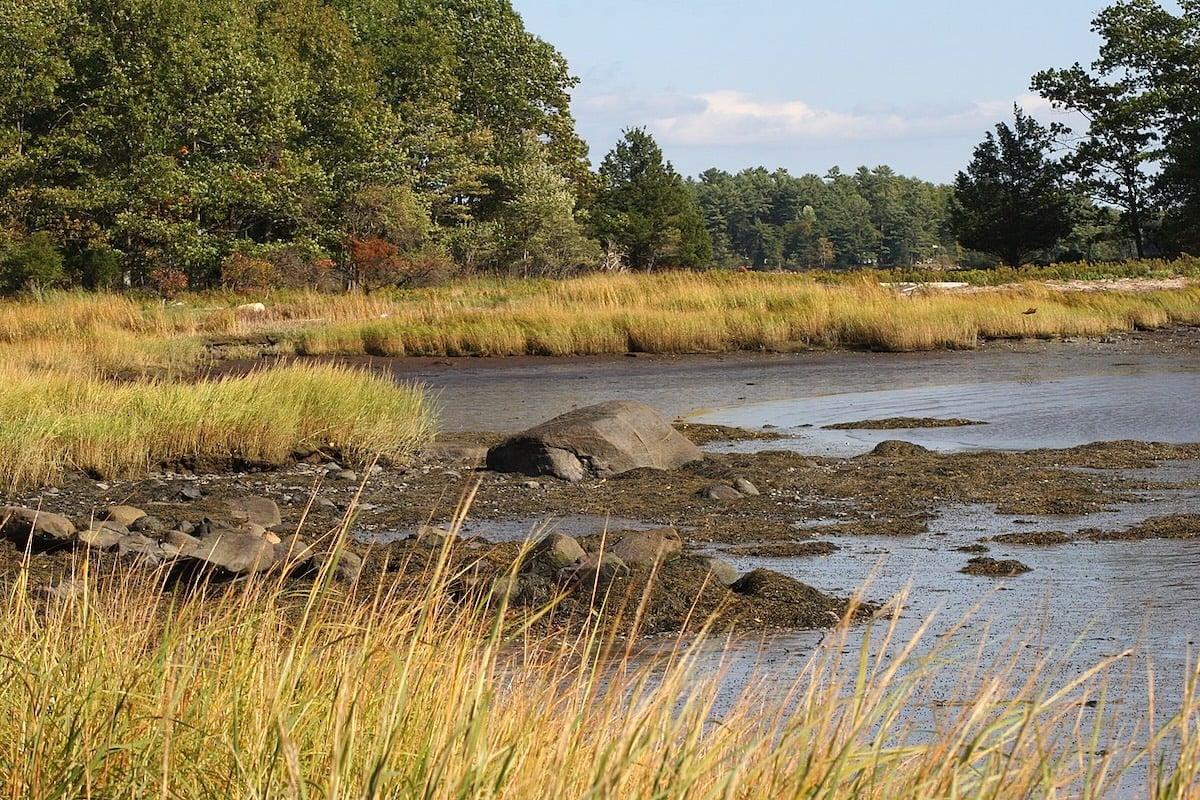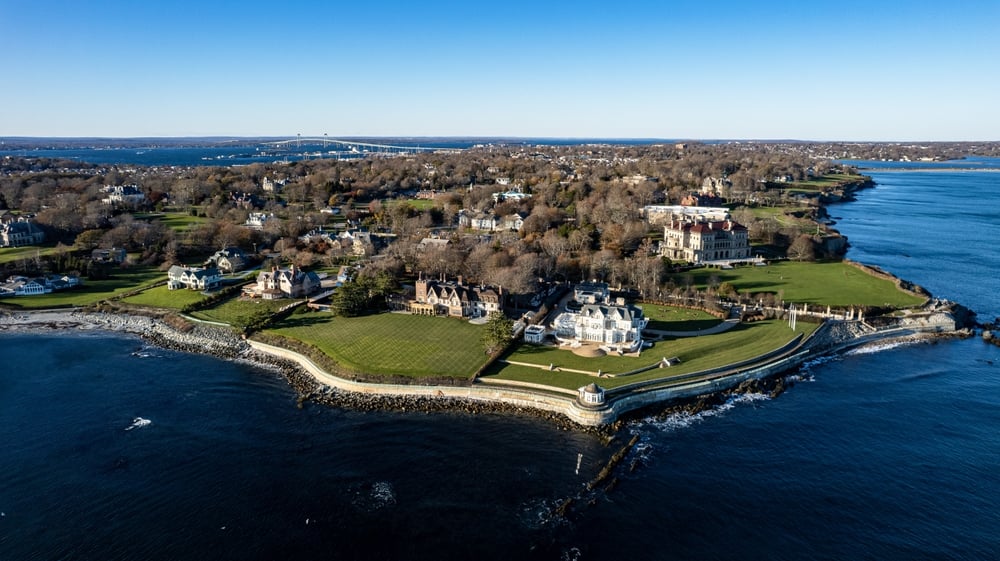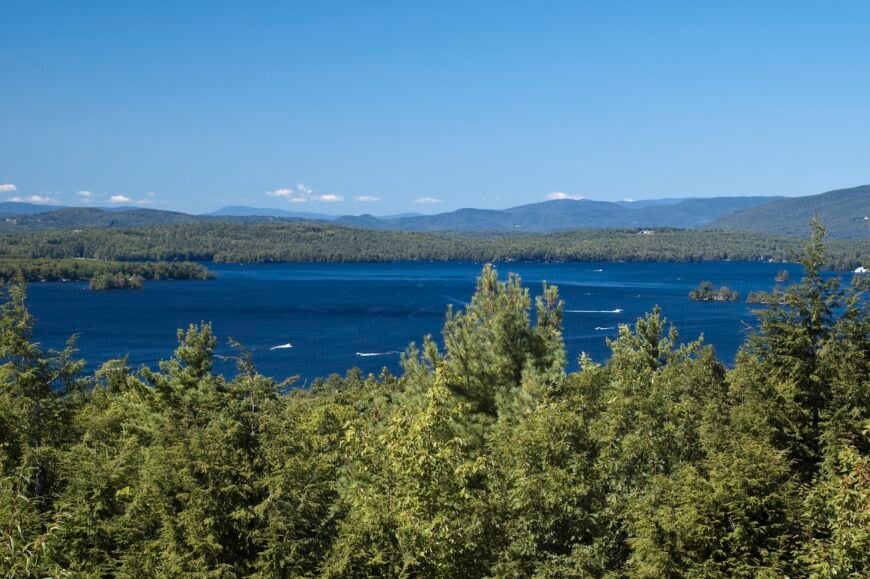
Whenever I need fresh air and a change of pace, I head south of the White Mountains and wander the smaller towns sprinkled across New Hampshire’s lower half.
This part of the state balances postcard villages, hardwood forests, sparkling rivers, and a salty stretch of Atlantic shoreline, all within an hour or two of one another. The communities below may be modest on a map, yet they overflow with trails, paddling routes, secret swimming holes, and farm-stand treats that reward a curious traveler.
I’ve arranged them as a countdown, saving my personal favorite for last, but every stop offers scenery worth pulling over for.
Lace up the hiking boots, toss the kayak on the roof rack, and keep an appetite for local ice cream—southern New Hampshire rarely disappoints. Here are the 15 towns I return to again and again when I’m chasing outdoor adventure.
15. Walpole: Scenic Farms and Connecticut River Views
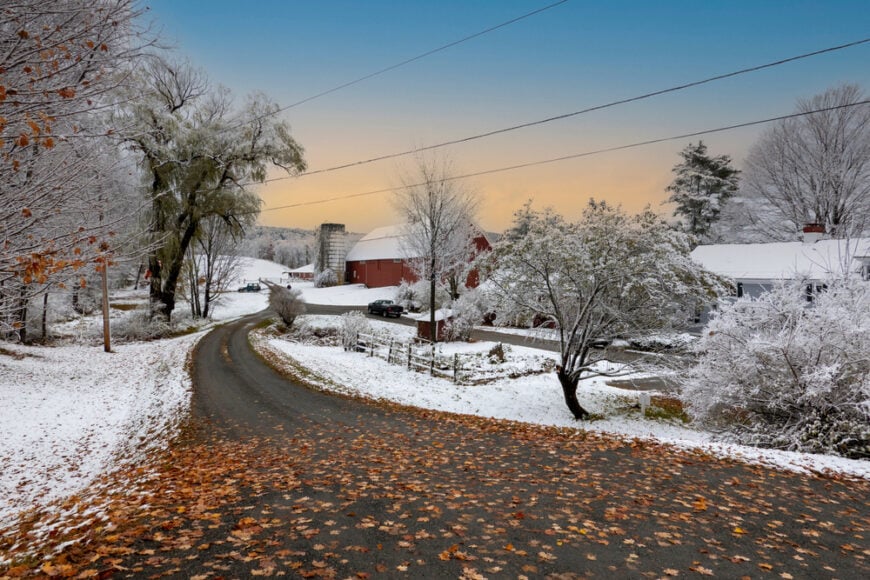
Walpole feels like it was sketched straight from a New England storybook, with a tidy village green framed by white-clapboard houses and church steeples. I like to start the day at the Walpole Creamery for a scoop of maple-walnut before strolling the fields of Alyson’s Orchard, where pick-your-own peaches overlook the river valley.
Cyclists favor the quiet backroads that weave between dairy farms, while paddlers drift down the Connecticut River watching for bald eagles that nest in the sycamores.
At dusk, I drive up County Road to catch a sunset that pours gold over Vermont’s Green Mountains across the water, a view most travelers speed right past on Route 12. If you visit in autumn, plan an afternoon at Boggy Meadow Farm; their raw-milk cheese pairs perfectly with a riverside picnic.
Walpole proves a rural landscape can feel both restful and wildly alive. The average price for a 3-4 bedroom home in Walpole ranges from $250,000 to $400,000, providing an affordable option for those looking to enjoy outdoor adventures in a scenic New England setting.
Where is Walpole?

Walpole sits in New Hampshire’s far southwest corner, hugging the Connecticut River just north of the Massachusetts line. The town’s perch on a bluff above the broad waterway gives it panoramic western views and easy access to river launches.
From Interstate 91 in Vermont, I cross the Charlestown–Walpole Bridge and reach the green in under ten minutes; U.S. Route 12 also threads directly through town for a scenic byway approach. Despite the pastoral setting, it’s only thirty minutes south of Keene, so stocking up on supplies is simple before heading into farm country.
14. Brookline: Outdoor Escapes Along Scenic Rail Trails
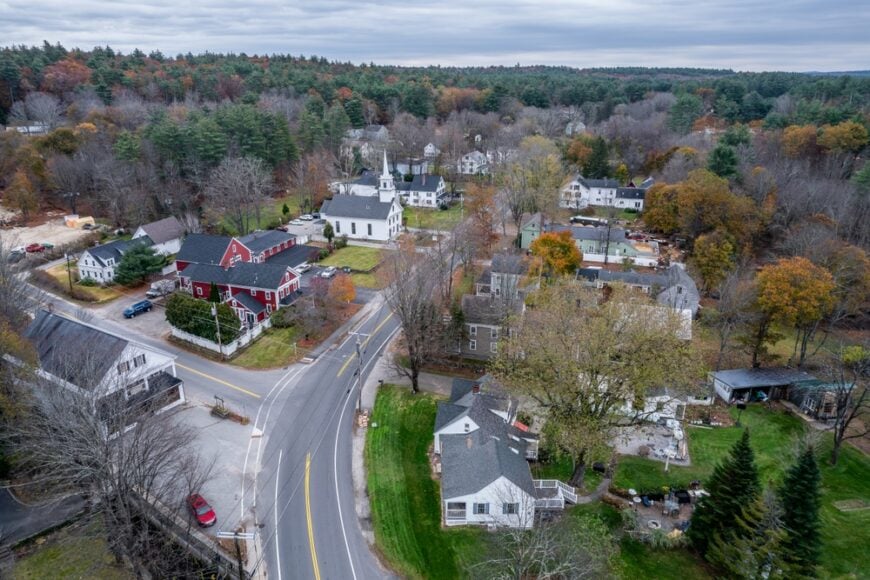
Brookline is the kind of quiet place where I can hear wind rustling through white pines even when I’m standing downtown. The highlight here is the Milford-Brookline Rail Trail, a crushed-stone route perfect for spring cycling or a snowshoe trek after the first Nor’easter rolls through.
On hot July afternoons, locals slip up to Lake Potanipo for a swim or climb modest Potanipo Hill for views stretching toward Mount Wachusett in Massachusetts.
Art lovers shouldn’t skip the Andres Institute of Art just over the line in neighboring Hollis; sculpture-dotted forest paths merge creative discovery with a healthy uphill workout.
Coffee from the rustic Fresh Start Market fuels my sunrise bird-watching sessions at the Nissitissit River, a lesser-known trout stream edged with hemlock stands. Brookline may be small, but its web of trails makes it a hub for low-key adventure.
3-4 bedroom homes in Brookline are priced between $300,000 and $500,000, offering a peaceful retreat with easy access to the natural beauty of the surrounding area.
Where is Brookline?
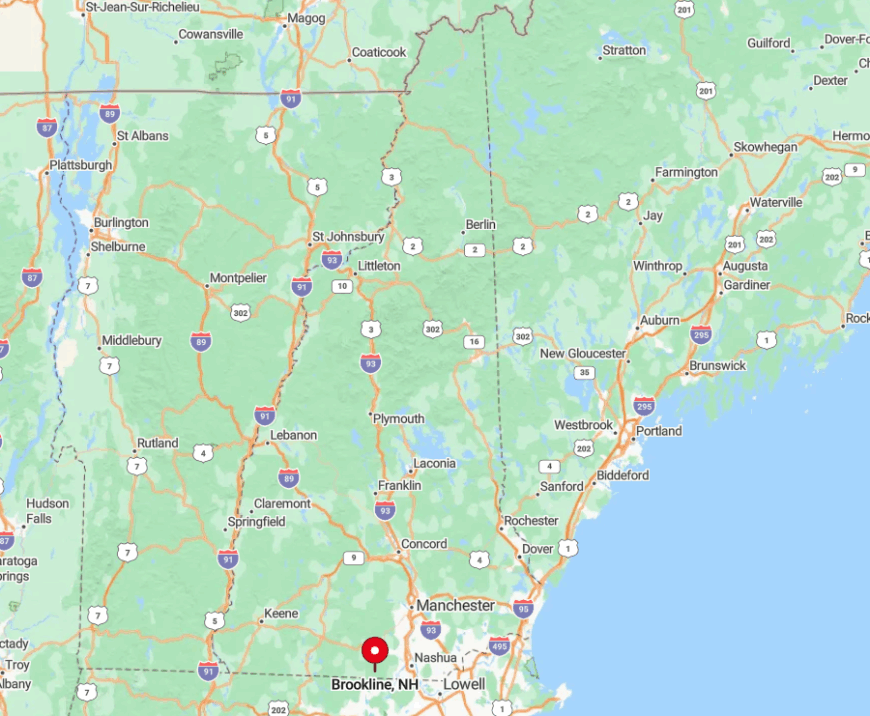
The town rests in Hillsborough County, only five miles from the Massachusetts border and about twenty minutes west of Nashua via Route 130. Its gentle hills mark the transition between granite uplands and the fertile Merrimack Valley, giving hikers both rocky outcrops and wetlands to explore.
I usually reach Brookline by following Route 13 south from Milford, which passes classic barns and roadside farm stands. Parking for the rail trail is easy to find behind the town ballfields, making spontaneous outings a breeze.
13. Chesterfield: Lakeside Serenity at Spofford Lake
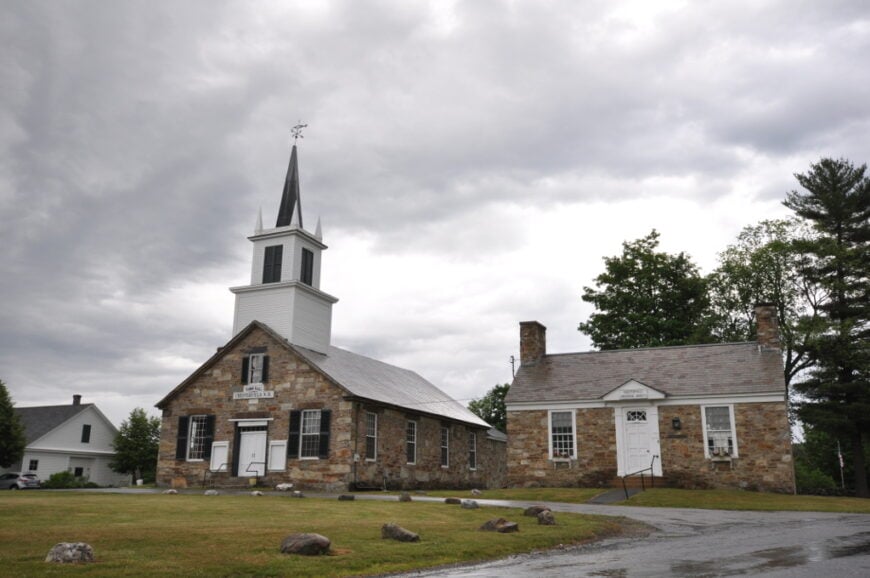
Chesterfield’s big draw is Spofford Lake, a glacial basin so clear I can count pebbles under my paddleboard even in shoulder-season light. Families gravitate to Ware’s Grove Beach, while anglers work the rocky points for smallmouth bass that grow hefty in the deep water.
Away from the shoreline, the Madame Sherri Forest hides a moss-covered “castle” ruin that gives hikes along the Ann Stokes Loop a dash of folklore and prime foliage photography.
I like to cap the day at Chesterfield Gorge Natural Area, where tumbling falls carve through 500-million-year-old schist—a geology lesson disguised as a picnic spot. Evening brings loons calling across Spofford’s mirror surface, a sound that stills conversation faster than any shushing librarian could hope for.
Chesterfield offers solitude without sacrificing convenience, a balance I treasure on quick weekend escapes. The average price for a 3-4 bedroom home in Chesterfield ranges from $250,000 to $400,000, offering an ideal location for outdoor enthusiasts seeking quiet mountain views and adventure.
Where is Chesterfield?
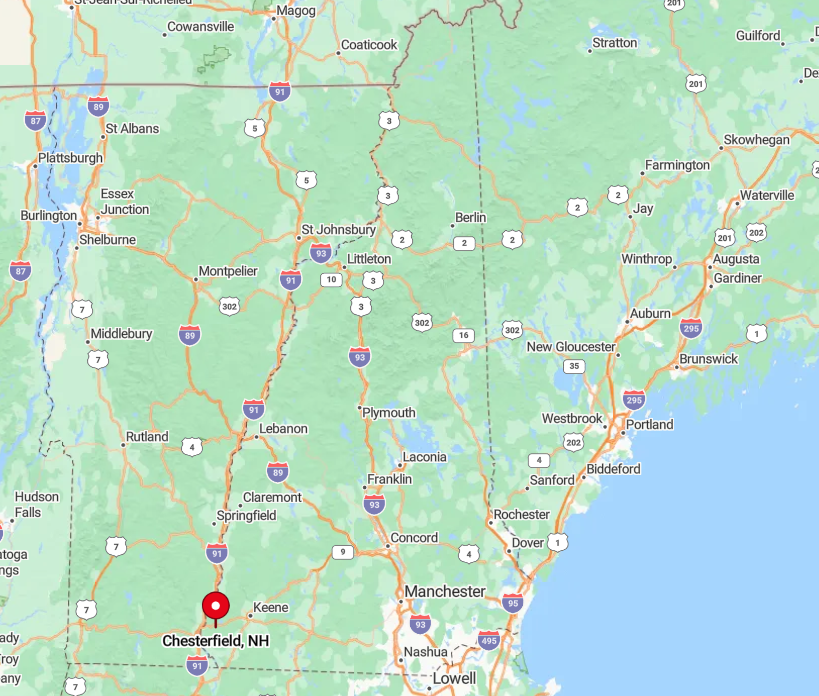
Chesterfield stretches between Keene and Brattleboro along Route 9, occupying a ridge that drops steeply to the Connecticut River on its western edge. The lake itself sits roughly 200 feet above the river, creating dramatic overlooks along Gulf Road and Davis Drive.
Drivers from Boston reach it in just over two hours by following I-93 north, then cutting west on Route 9 at Concord. Once here, public boat ramps and well-marked trailheads make navigation straightforward even for first-time visitors.
12. Harrisville: Picturesque Village with Historic Mills
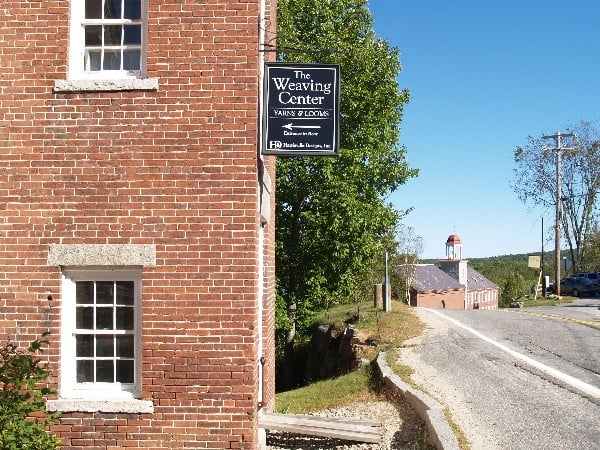
I wander the loop around the village center, admiring weather-worn spinning sheds now converted into artist studios and the beloved Harrisville General Store, where the cheddar-apple sandwich is as iconic as the view.
Kayakers can glide from the pond into Skatutakee Lake, passing loon nests tucked among cattails, while hikers tackle Mount Skatutakee for a modest summit panorama that outperforms its elevation.
Photographers flock here at dawn when rising mist turns the mill stacks into ghostly silhouettes, a scene I never grow tired of shooting. For a quiet forest walk, the child-friendly railbed of the Cheshire Rail Trail begins just south of Marlborough and meanders through hemlock groves.
Harrisville proves that industrial history and outdoor recreation make surprisingly compatible neighbors. 3-4 bedroom homes in Harrisville are priced between $250,000 and $450,000, providing a charming base for those wanting to explore the area’s scenic trails and outdoor activities.
Where is Harrisville?
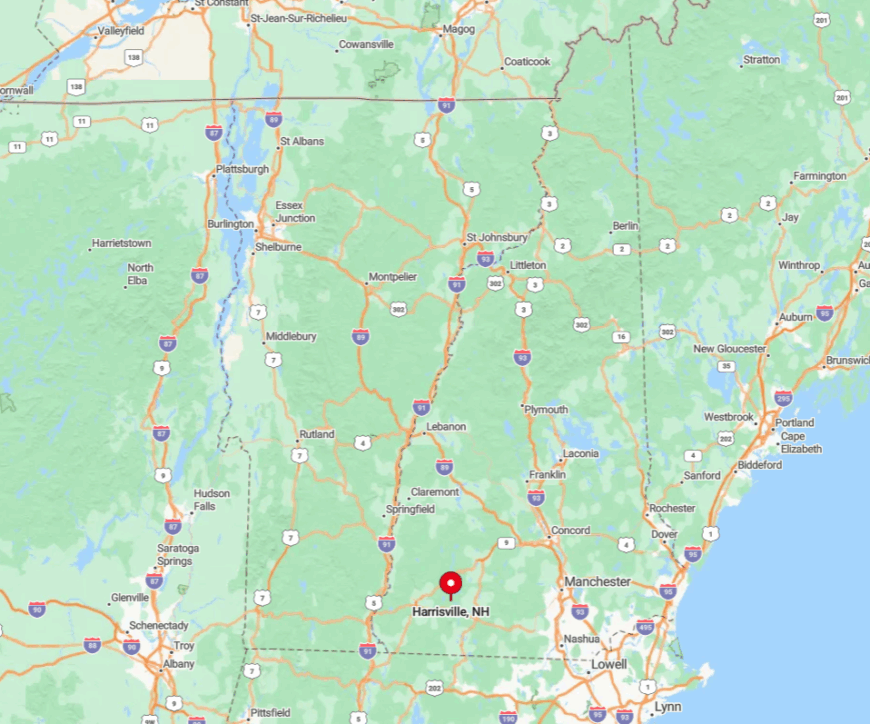
The village lies in the highlands east of Keene, roughly ten miles off Route 101 in Cheshire County. Its upland setting means crisp nights and vibrant autumn color, with ponds stitched together by old mill races that now serve paddlers instead of power looms.
I usually exit Route 101 at Marlborough and follow Chesham Road; winding through woods heightens the sense of discovery when the brick mills suddenly appear beside the water. Though remote, Harrisville is only an hour and a half from Manchester-Boston Regional Airport, keeping travel logistics simple.
11. Jaffrey: Gateway to Mount Monadnock
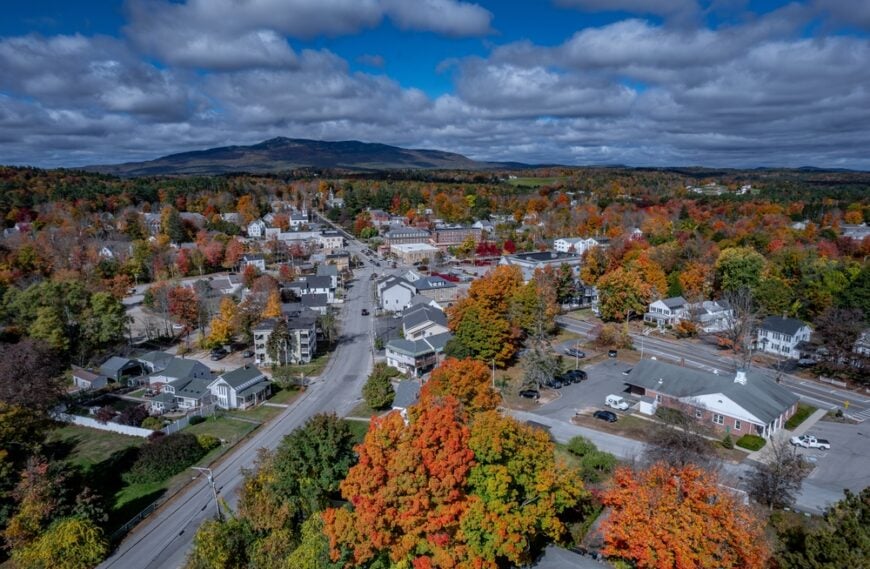
Jaffrey’s identity is inseparable from the granite bulk of Mount Monadnock that towers above the town like a friendly sentinel. More than 125,000 hikers tackle its exposed summit each year, but I also enjoy the lesser-traveled White Dot–Cascade Loop for waterfall views most climbers miss as they rush to the top.
Downtown, the scent of maple crêpes drifts from Sunflowers Café, perfect fuel before exploring the rail-trail section of the Monadnock Branch, where abandoned granite quarries still store startlingly blue water. After a climb, locals cool off at Gilson Pond’s small beach or rent canoes to trace beaver lodges along the shoreline.
I rarely leave without a detour to Kimball Farm for a towering cone of black raspberry that seems to soothe trail-weary legs. Between peak-bagging and pond paddling, Jaffrey captures every flavor of outdoor fun in a single day.
The average price for a 3-4 bedroom home in Jaffrey ranges from $200,000 to $350,000, making it a budget-friendly option for families eager to experience hiking and nature exploration.
Where is Jaffrey?
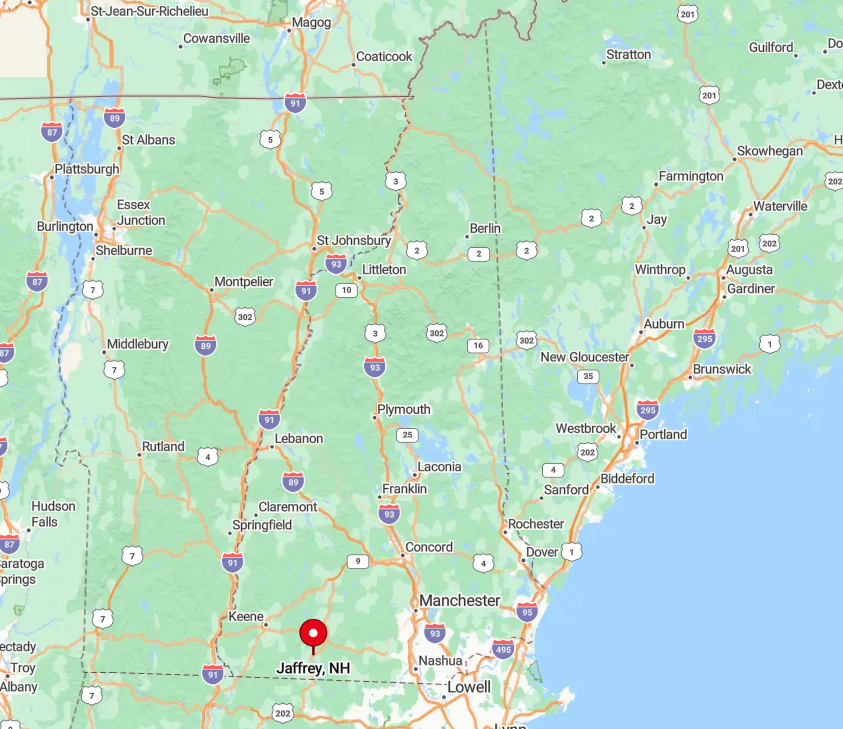
Set in southern Cheshire County, Jaffrey straddles Routes 124 and 202 about forty minutes west of Nashua. Monadnock State Park’s main trailhead lies just five miles from the village green, so you can sip morning coffee and stand on granite ledges before lunch.
From Boston, I zip up Route 2, cross into New Hampshire on Route 202, and reach town in just over ninety minutes. Plenty of trailhead parking, plus shuttles on peak weekends, keeps access manageable even during foliage season.
10. Portsmouth: Historical Seaport with Waterfront Adventures
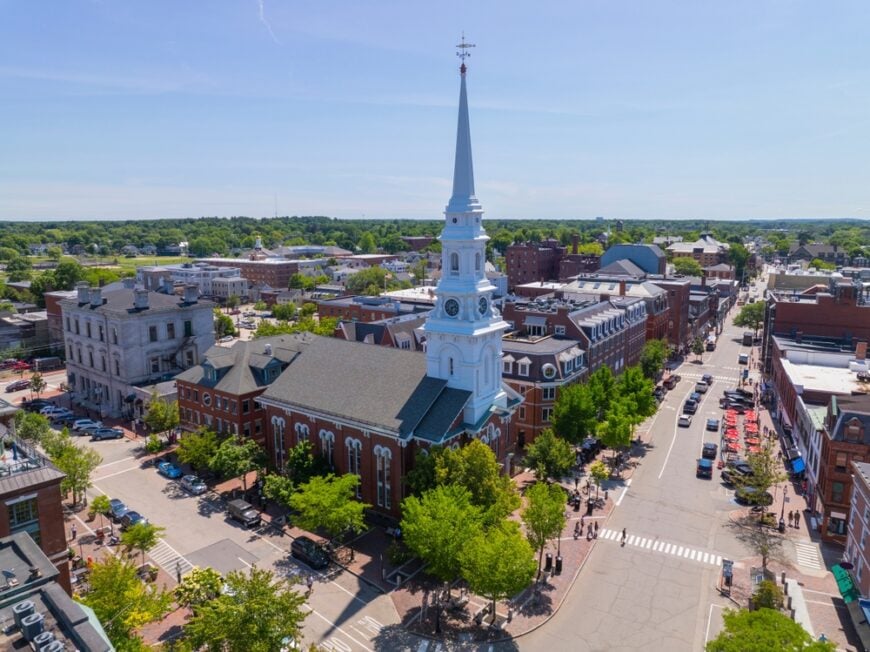
Portsmouth blends maritime heritage with modern energy, and I love wandering its brick sidewalks knowing tall ships once unloaded salt cod where cafés now roast espresso.
For outdoor kicks, I hop aboard a harbor cruise to the Isles of Shoals, a rocky archipelago that feels wilder than its six-mile distance suggests. Back onshore, the winding Prescott Park gardens lead to kayak rentals at Peirce Island where strong tides give an exhilarating push around the back channel.
Cyclists circle the Piscataqua River on the newly extended Portsmouth Greenway, pausing at Four Tree Island for sweeping views of the Naval Shipyard cranes. I usually window-shop along Market Street until sunset, then snag a waterfront table for local oysters while harbor lights glitter on the water.
With walkable adventures and salt air at every turn, Portsmouth proves seacoast fun doesn’t require neon boardwalks or carnival rides. 3-4 bedroom homes in Portsmouth are priced between $600,000 and $900,000, reflecting the town’s desirability with a blend of coastal beauty and proximity to outdoor adventures.
Where is Portsmouth?
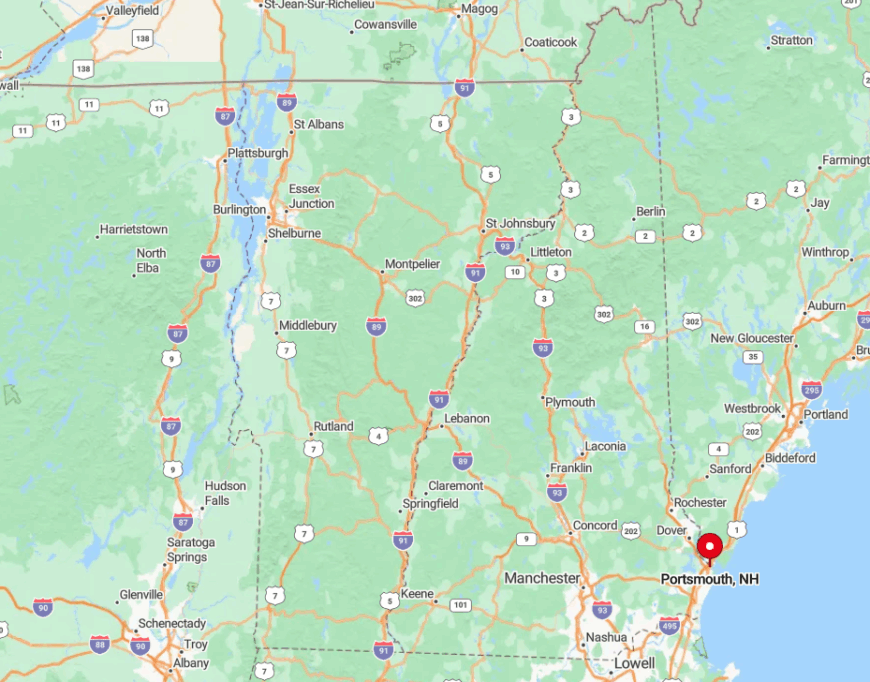
The city anchors New Hampshire’s tiny seacoast, wedged between Maine and Massachusetts at the mouth of the Piscataqua River. Its tidal estuaries create a patchwork of mudflats and salt marshes that teem with migratory birds—prime spotting territory from the Route 1A causeway.
I-95 passes a mile west of downtown, so reaching Portsmouth is a straight shot from Boston’s Logan Airport in under an hour. Once parked, most attractions are within easy walking or biking distance, making a car optional for day-to-day exploring.
9. Hampton: Coastal Town with Beaches and Trails
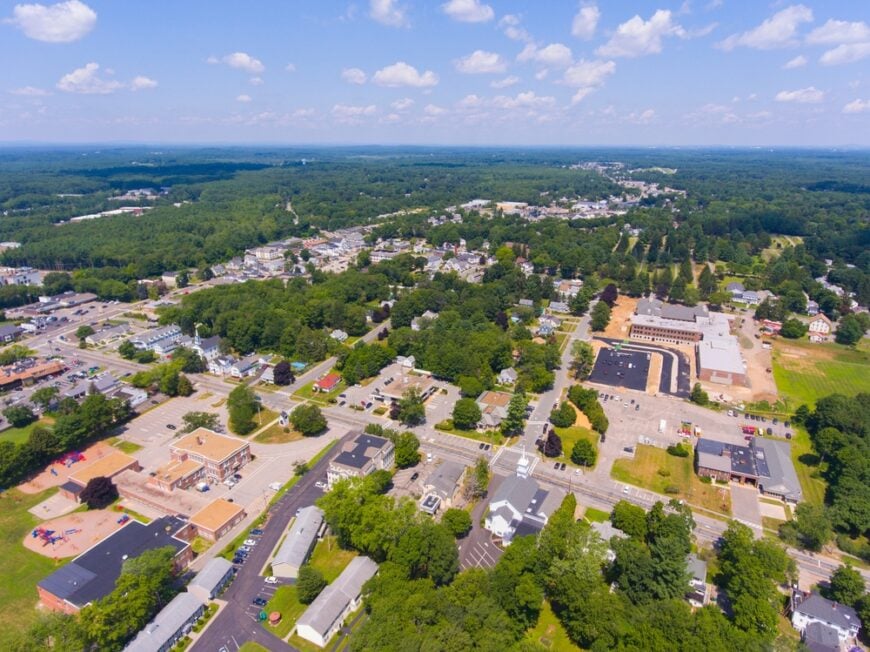
Hampton is best known for its wide sandy beach, but I find equal joy exploring the quieter side of town at Hampton Salt Marsh Conservation Area, where snowy egrets stalk tidal creeks.
Early risers can jog the mile-long boardwalk before crowds arrive, then rent a surfboard to chase mellow Atlantic waves perfect for beginners. Across Ocean Boulevard, the Great Freedom Trail winds through dunes and pitch pine groves, revealing surprising pockets of prickly pear cactus that thrive in the sandy soil.
Seafood shacks line the strip, yet my hidden gem is the Beach Plum on Route 1, serving lobster rolls hefty enough to refuel an afternoon kayak session on the Hampton River.
If music is your thing, summer nights bring free concerts at the Seashell Stage—best enjoyed with toes buried in cooling sand. Hampton offers a classic beach scene balanced by protected nature, which most day-trippers miss.
The average price for a 3-4 bedroom home in Hampton ranges from $400,000 to $700,000, offering a mix of beachside living and easy access to outdoor activities and nature trails.
Where is Hampton?
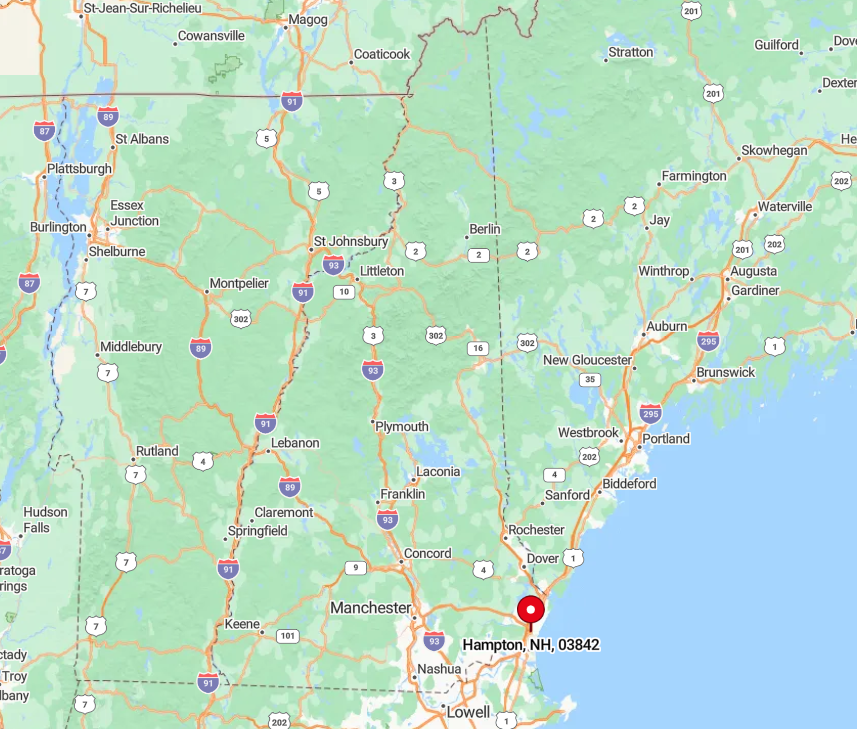
The town occupies a bulge of coastline ten miles south of Portsmouth and is easily accessed via Route 101, which converts from interstate to beach boulevard in its final mile. Extensive barrier dunes shield the inland salt marshes, creating a mosaic of habitats within walking distance.
From Manchester, I follow Route 101 east for 40 minutes until sand replaces pavement underfoot. Plenty of municipal lots and a seasonal trolley make bouncing between beach and marsh straightforward even on busy weekends.
8. Wilton: Artistic Community Amidst Nature
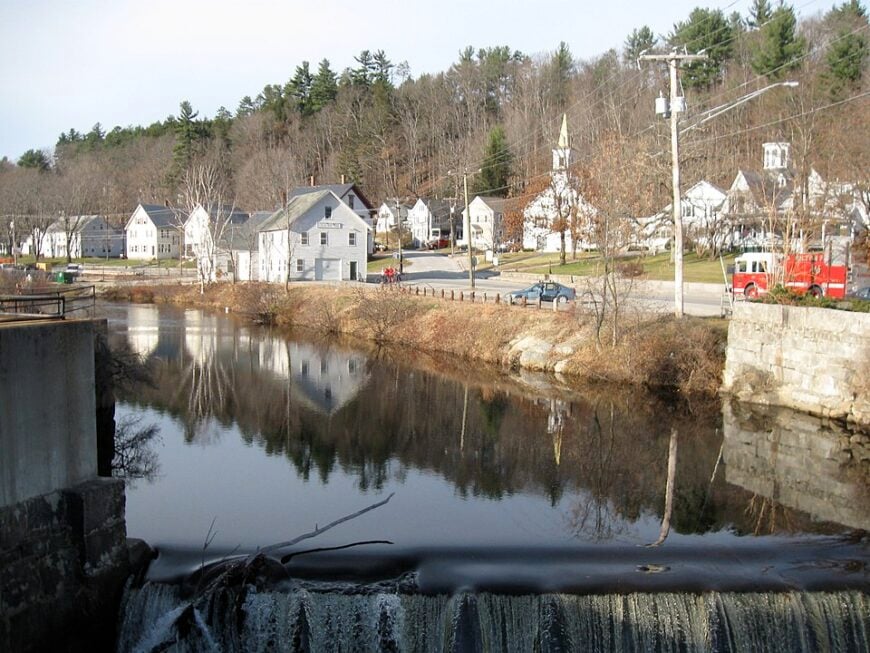
Wilton’s compact Main Street hides an outsized arts scene; I’ve spent rainy mornings browsing Local Color Gallery and catching matinees at the century-old Wilton Town Hall Theatre, still screening films with real butter on the popcorn.
Clear skies lure me to Purgatory Falls, where a moderate trek rewards hikers with tiered cascades plunging through a hemlock gorge that feels miles from civilization. Mountain bikers favor the Lyndeborough State Forest’s rolling singletrack, while organic gardeners pilgrimage to High Mowing Seeds’ trial fields just up the road.
I cap afternoons with a pint at Bent Hill Brewery, set inside a restored farmhouse overlooking hayfields where fireflies rise in July. The juxtaposition of creative energy and wilderness access gives Wilton a personality as refreshing as its spring-fed swimming holes.
If you like your adventures with a side of indie cinema, this is the place. 3-4 bedroom homes in Wilton are priced between $250,000 and $400,000, providing a serene environment for those interested in outdoor exploration and peaceful living.
Where is Wilton?
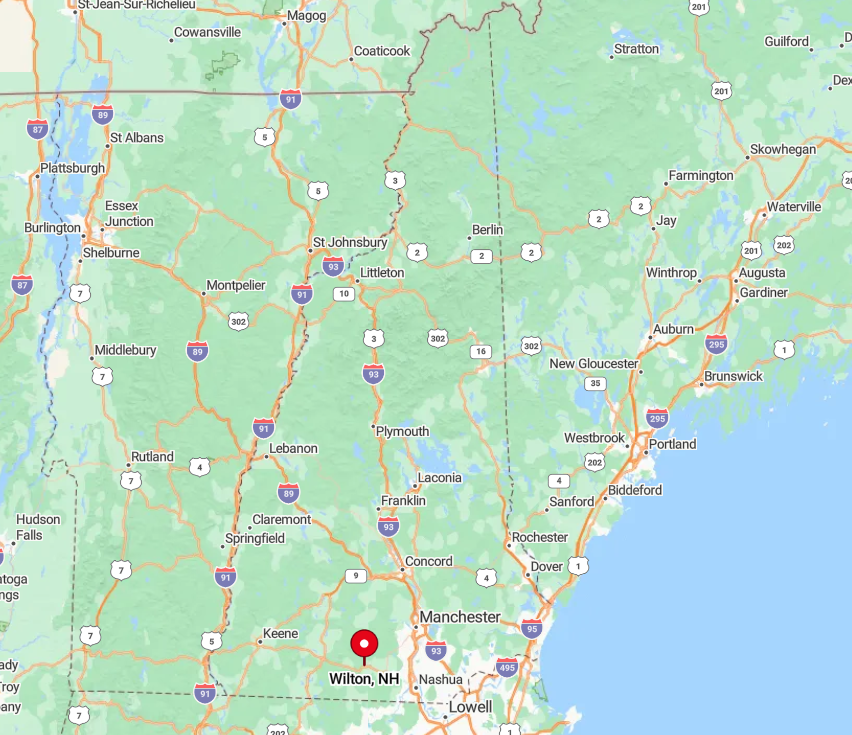
Wilton straddles the Souhegan River in western Hillsborough County, fifteen minutes west of Milford on Route 101. Its position at the base of Stony Brook Valley funnels cool air and morning fog that nourish lush forests, perfect for waterfall scouting.
From Nashua, I simply head west on Route 101A, then follow Route 31 north along the river into downtown. Free parking by the town library leaves you steps from trail maps, art galleries, and a riverside picnic spot.
7. Hollis: Rolling Hills and Fruit Orchards
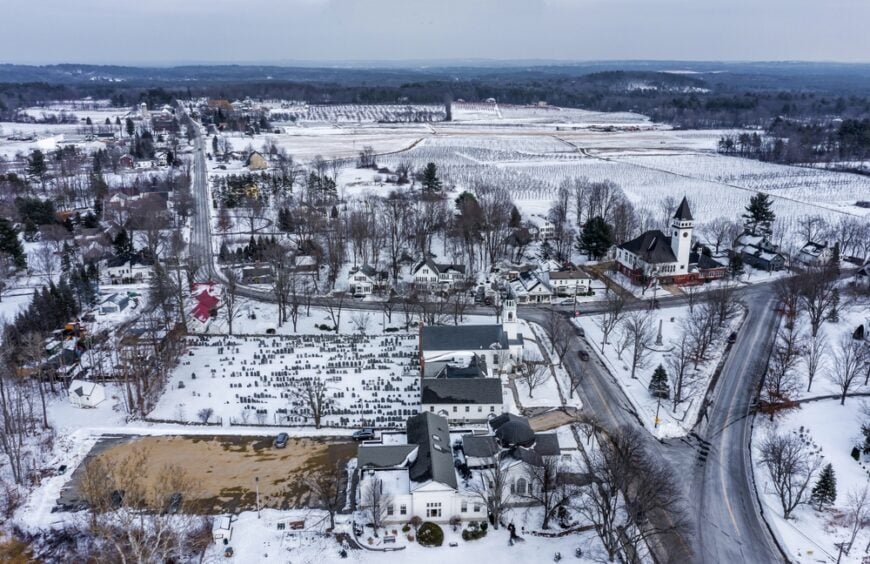
Every September, I know it’s apple season when traffic slows on Route 130 as families make a beeline for Hollis’s historic orchards. Brookdale and Lull Farms both offer pick-your-own fruit, fresh-pressed cider, and hayrides through fields edged by low stone walls that date to the Revolutionary era.
Between bites, I bike the flat Nashua River Rail Trail extension that sneaks across the Massachusetts line, passing cranberry bogs and deer-browsed wetlands. For more elevation, the silver maples of Beaver Brook Reservation shade a network of trails where kids hunt geocaches and naturalists count salamanders.
I often finish the day at Silver Lake State Park, a quiet beach locals guard like a secret. Hollis shows that farmland and forest can share the same postcard without crowding one another.
The average price for a 3-4 bedroom home in Hollis ranges from $500,000 to $800,000, offering a larger, upscale option for those seeking a community close to hiking and outdoor recreation.
Where is Hollis?
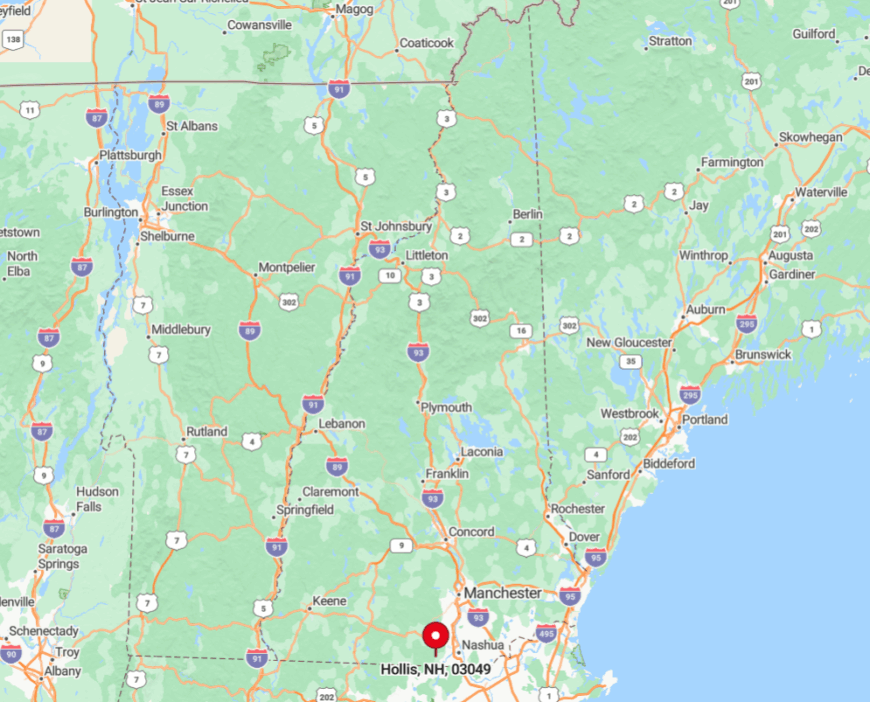
The town sits just west of Nashua, bordered by Routes 111 and 122, making it an easy half-hour hop from Interstate 495 in Massachusetts. Its gentle drumlins were sculpted by retreating glaciers, leaving fertile soils ideal for orchards and berry patches.
I usually approach via Route 111 from Hudson, where roadside farm stands tempt me with early-morning doughnuts. Plenty of on-farm parking and signed trailheads mean you can switch from apple picking to woodland hiking in minutes.
6. Newmarket: Riverside Beauty and Historic Mills
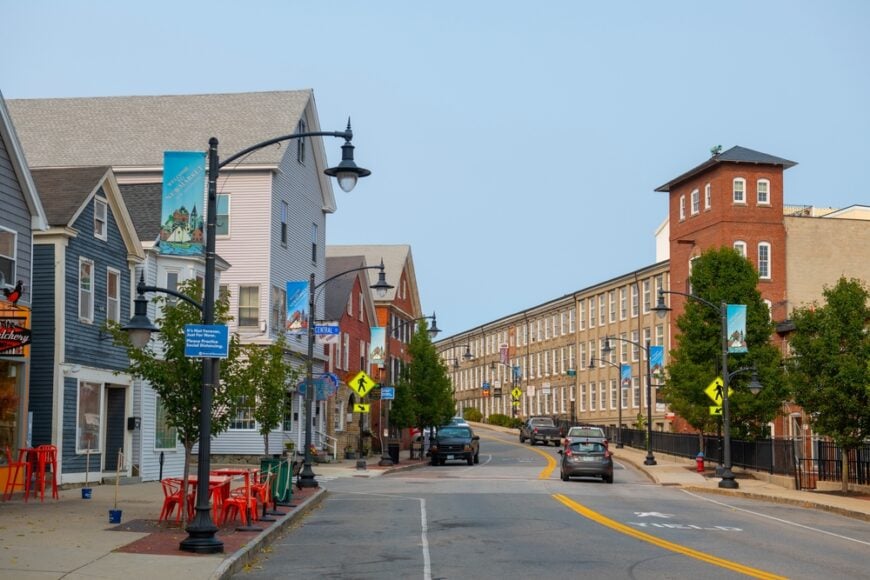
Newmarket’s Lamprey River waterfront hums with life—a kayak slips under the old stone arch bridge while, above, patio diners savor fish tacos with a current-cooled breeze. Restored mill buildings now host coffee roasters, gear shops, and live-music venues, yet their granite walls still echo with the whir of 19th-century textile looms.
I like to paddle upstream to Heron Point Sanctuary, a tidal island where osprey dive and spartina grass waves like prairie in the wind. Come evening, I trade the paddle for hiking boots and climb Bald Hill, a five-minute drive south, to catch a sweeping vista of Great Bay’s glinting estuary.
Newmarket melds saltwater ecology with small-town charm in a way that keeps my daypack permanently in the trunk. It’s a reminder that adventure sometimes launches right from the town dock.
3-4 bedroom homes in Newmarket are priced between $350,000 and $600,000, offering a great location for those looking to enjoy nature while being close to vibrant local attractions.
Where is Newmarket?
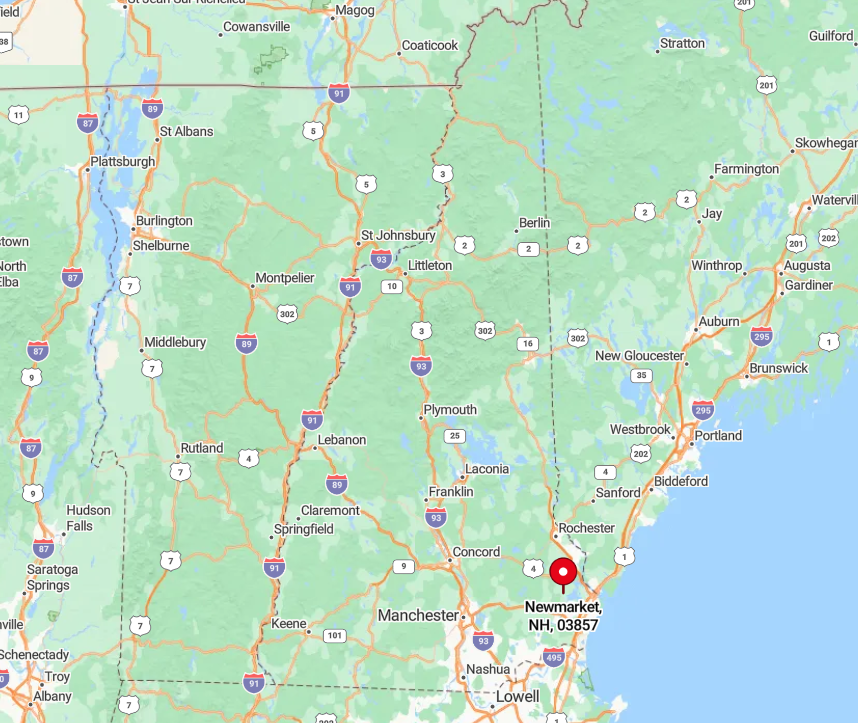
Newmarket lies on the western edge of Great Bay, about twelve miles inland from the Atlantic and five miles south of Durham on Route 108. The tidal portion of the Lamprey River rises and falls six feet, so planning paddles around the tide chart adds an element of strategy.
From I-95, I exit at Portsmouth and follow Route 4 west to the Squamscott Road cutoff, reaching downtown in twenty minutes. Free parking near the mills lets you walk or roll your kayak directly to the public launch.
5. Durham: College Town Surrounded by Nature
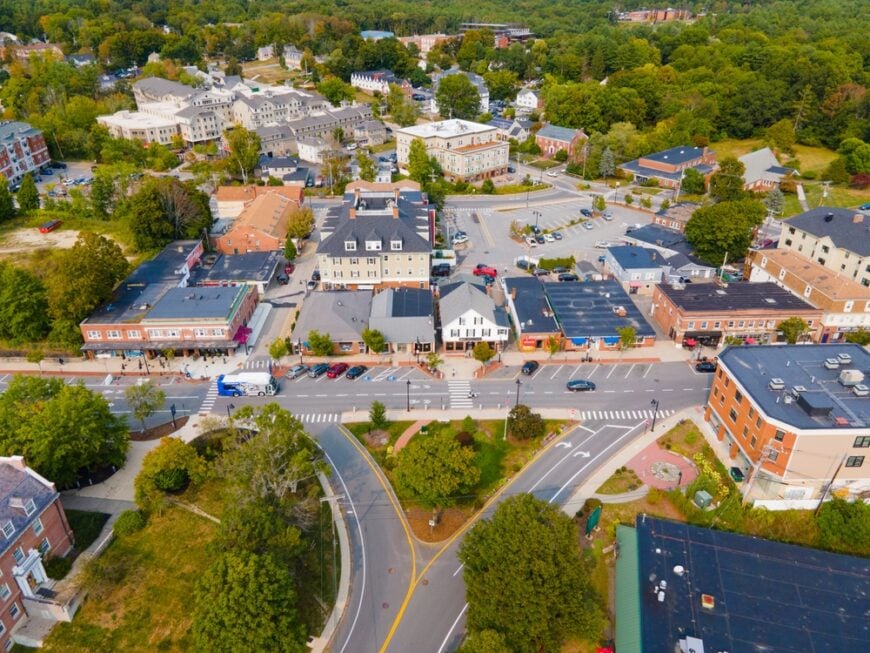
Durham may host the University of New Hampshire, but I come more for its forest classrooms than lecture halls. College Woods, a 250-acre preserve, offers five miles of gentle trails where interpretive signs turn a jog into a botany lesson as the Oyster River murmurs nearby.
At Adams Point Wildlife Area, saltwater meets freshwater, creating tide-pooled coves perfect for fall migratory-bird watching; spotting a glossy ibis here felt like stumbling into Florida.
Cyclists can spin the Sweet Trail, an eight-mile route through beaver meadows ending at Great Bay’s breezy shore. Afterward, I refuel at Young’s Restaurant downtown—try the blueberry pancakes drizzled with local maple syrup.
Durham proves a bustling campus can coexist with raw nature just steps beyond the quad. The average price for a 3-4 bedroom home in Durham ranges from $400,000 to $700,000, offering a mix of affordability and scenic views for outdoor lovers looking to explore the surrounding wilderness.
Where is Durham?
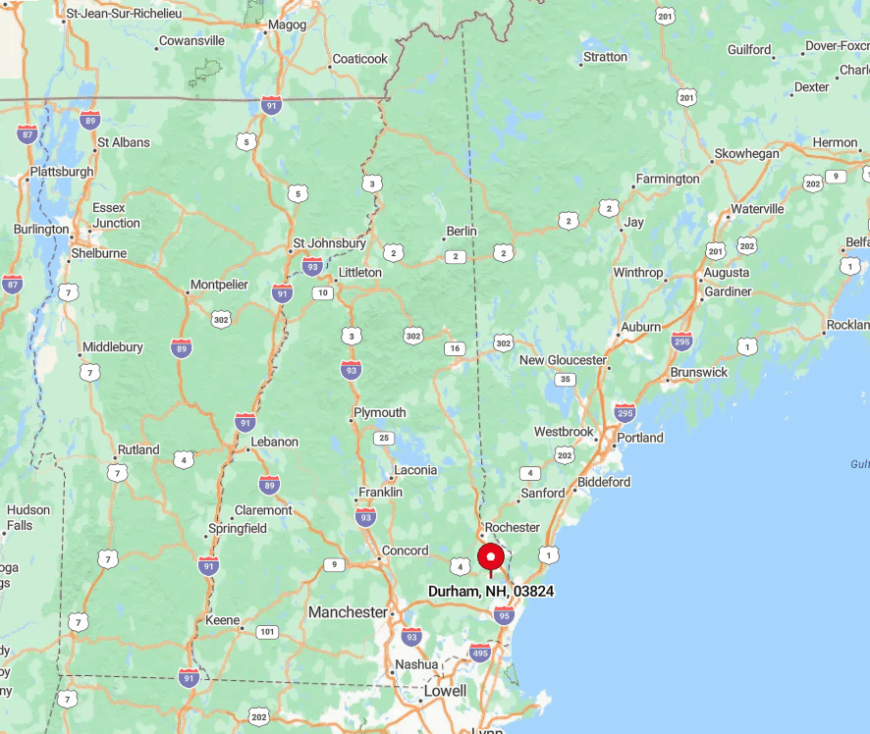
The town sits on Route 108 between Dover and Newmarket, only ten minutes south of Spaulding Turnpike’s Exit 8. Nestled at the head of Great Bay, it mixes rolling farmland with tidal wetlands sculpted by the Oyster River.
I often hop an Amtrak Downeaster train from Boston and walk straight from the station to the trailheads, eliminating parking worries. For drivers, Route 4 delivers a scenic approach across tidal inlets that sparkle at high tide.
4. Amherst: Colonial Charm Amidst Breathtaking Landscapes
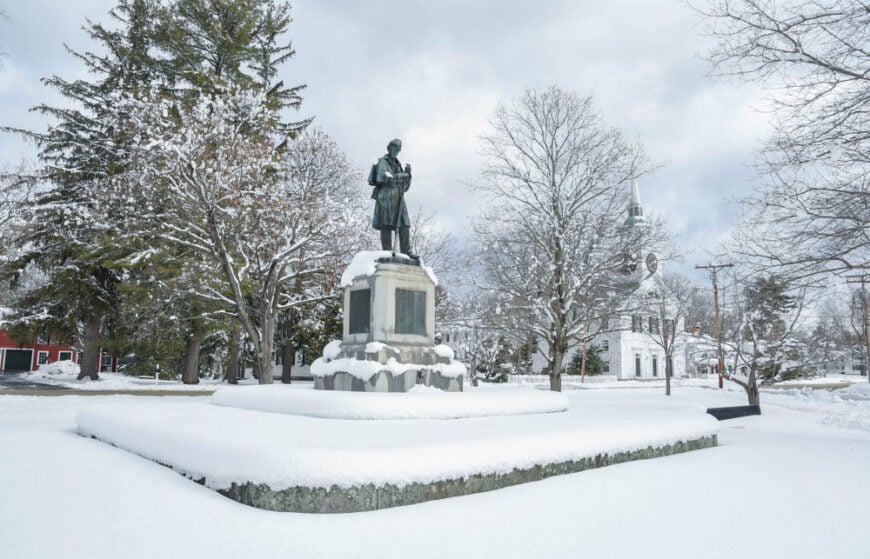
Amherst’s village green looks almost unchanged since 1800, ringed by clapboard colonials whose wide floorboards still creak with history. Yet just outside town, the Joe English Reservation unfurls 600 acres of ledgy outcrops, vernal pools, and a surprising cliff-top overlook that catches the sunset over Pack Monadnock.
I also slip into Ponemah Bog Wildlife Sanctuary, where a floating boardwalk leads across a quaking sphagnum mat to see rare pitcher plants devouring unsuspecting insects. Cyclists favor the shaded backroads that weave through hayfields dotted with old granite sheep dips, a relic of the town’s wool-production past.
When I crave a treat, Moulton’s Market dishes out legendary whoopie pies—perfect summit snacks. Amherst lets me toggle between colonial history and wild landscape in under ten minutes.
3-4 bedroom homes in Amherst are priced between $400,000 and $700,000, providing a great base for those seeking to explore the area’s parks, trails, and outdoor beauty.
Where is Amherst?
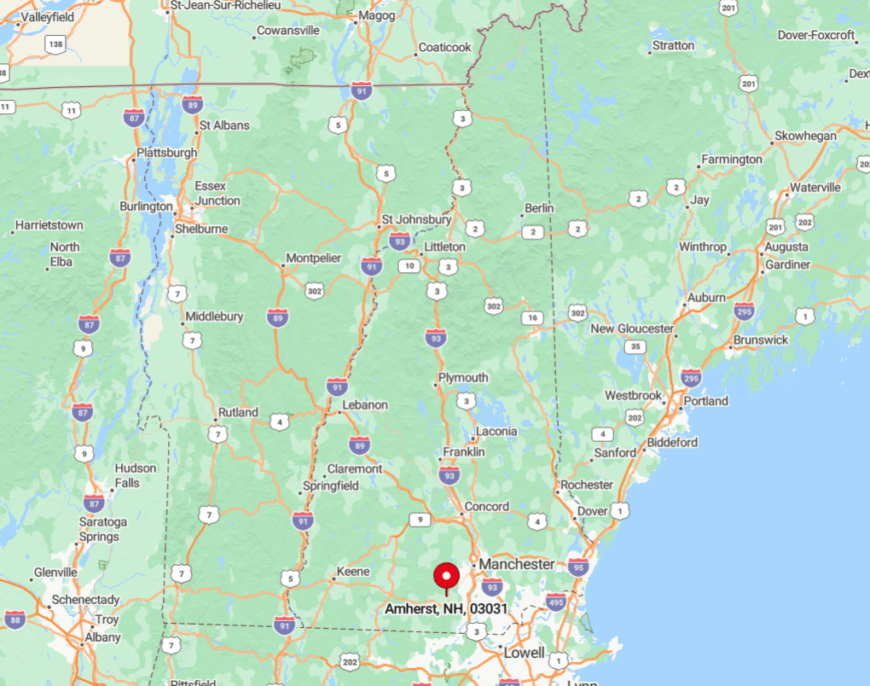
The town lies northwest of Nashua, accessible via Route 101 or Route 122, about an hour from Boston’s northern suburbs. Its position on the Souhegan River’s floodplain created fertile farmland, while nearby drumlins provide the rocky ledges hikers seek.
I typically exit the Everett Turnpike at Milford and follow signs two miles east to the historic center. Trailhead parking for Joe English Reservation sits off Lyndeborough Road, well signed and rarely full.
3. Milford: The Granite Town with Scenic Trails
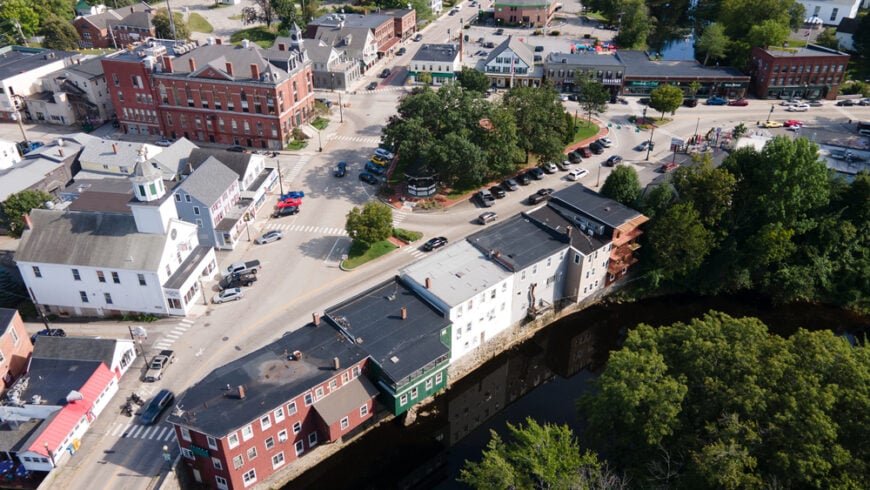
Milford earned the nickname “Granite Town” thanks to quarries that supplied much of Boston’s curbstone, and their sheer walls now rise like amphitheaters above still blue water at the Souhegan River Park.
The Oval, Milford’s circular downtown, hosts a Saturday farmers market where I sample kettle corn before crossing the bridge to sniff out waterfalls along Tucker Brook Town Forest. For elevation, I hike to the breached dam at Mile Slip Trail System, where beavers are busily reclaiming the marsh—nature’s own landscape architects.
Photographers love the nighttime view of the town hall clock tower mirrored in the river, but a hidden sunrise gem is Emerson Park’s upstream bend, where morning fog turns cotton-candy pink.
After any outing, the smoked-brisket poutine at Union Coffee hits the spot, proving small towns can think big on flavor. Milford showcases industrial heritage that now serves adventure seekers instead of stonecutters.
The average price for a 3-4 bedroom home in Milford ranges from $250,000 to $450,000, making it an affordable choice for those looking to immerse themselves in nature while enjoying suburban living.
Where is Milford?
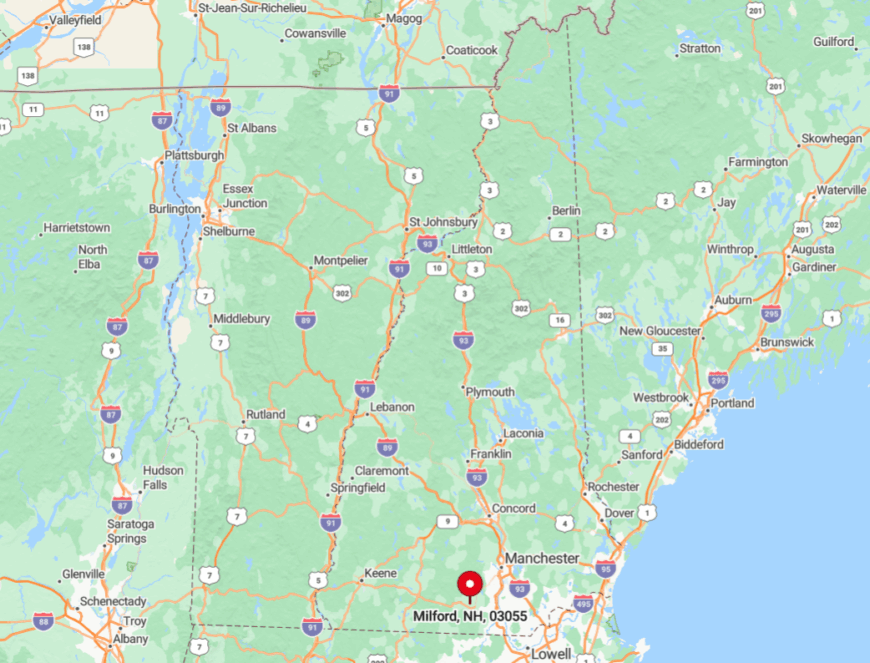
Milford anchors western Hillsborough County at the junction of Routes 101, 13, and 101A, making it a natural hub 15 miles west of Nashua. The Souhegan River slices through town, creating granite outcrops favored by climbers and anglers alike.
I zoom up the Everett Turnpike from Manchester, exit at Route 101 west, and roll into the Oval in twenty minutes. Once parked, trailheads for Tucker Brook and Mile Slip sit within a ten-minute drive, so swapping espresso for a trekking pole is seamless.
2. Exeter: Historic Riverside Town with Kayaking Opportunities
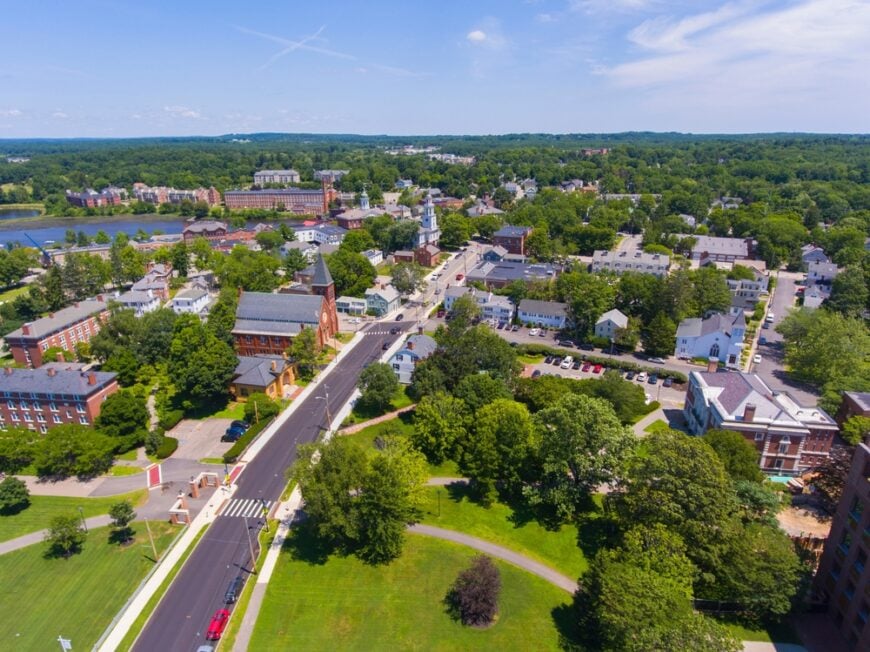
Exeter’s waterfront feels pleasantly timeless, from the brick exteriors of Phillips Exeter Academy to the clapboard shops along Water Street that overlook the Squamscott River’s tidal dance.
I like to launch my kayak at the Gilman Park ramp and ride the incoming tide past osprey platforms toward Great Bay, then let the ebbing current ferry me back in time for lunch at Laney & Lu’s health-fuel café.
History buffs tour the American Independence Museum to see one of the first printed copies of the Declaration of Independence, while trail seekers head to Henderson-Swasey Town Forest for flowing mountain-bike singletrack under towering white pines.
My secret pleasure is sunset on the Swasey Parkway embankment, where the town band often rehearses open-air and gulls wheel overhead—music and nature in spontaneous harmony. Exeter proves you don’t need wilderness miles from civilization to find thrilling outdoor moments.
The river itself delivers the adventure right to town. 3-4 bedroom homes in Exeter are priced between $400,000 and $700,000, offering a desirable location near hiking trails, rivers, and outdoor activities for those seeking an active lifestyle.
Where is Exeter?
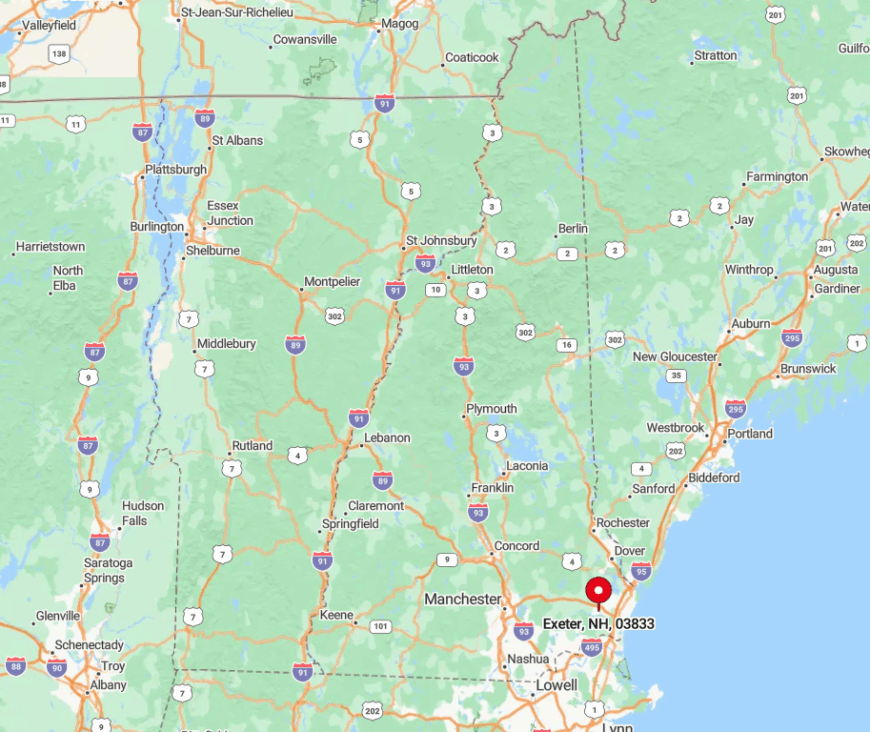
Exeter hugs the tidal Squamscott River in Rockingham County, a quick detour off I-95 via Exit 2 and five minutes west on Route 101. Its location at the head of the river estuary provides brackish water perfect for easy tide-assisted paddling.
I sometimes arrive by Amtrak, stepping off at the historic depot and walking two blocks to the river launch. Well-signed parking lots and a riverside multi-use path make navigating bikes, boats, or strollers a low-stress affair.
1. Peterborough: A Quaint Town Nestled in the Monadnock Region
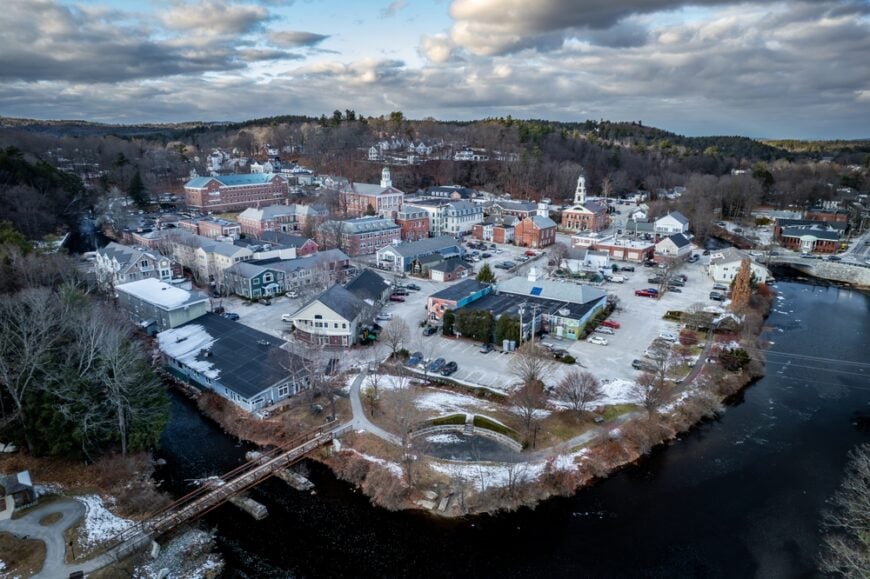
Peterborough captures my heart every visit, mixing artistic flair with grand outdoor access that makes me linger far longer than planned.
Downtown’s Depot Square buzzes with indie bookstores and chocolatiers, yet in five minutes I can be hiking the Cranberry Meadow Pond Trail where beavers sculpt the wetlands below Pack Monadnock.
I like to rent a gravel bike at Contoocook Cycle and spin the Old Railroad Trail, a shady route hugging the river, where whitewater paddlers tackle each spring runoff. The MacDowell artists’ residency occasionally opens its idyllic grounds to the public; wandering those wooded lanes feels like stepping into a live sketchbook.
Evening brings a golden glow to the steel trusses of the Peterborough Bridge, best viewed from the Riverwalk with a cone from Ava Marie’s Ice Cream. With cultural depth and wild ridges side by side, Peterborough stands as my top choice for a full-spectrum outdoor escape.
The average price for a 3-4 bedroom home in Peterborough ranges from $300,000 to $500,000, making it a great option for those interested in outdoor adventures and beautiful mountain views.
Where is Peterborough?
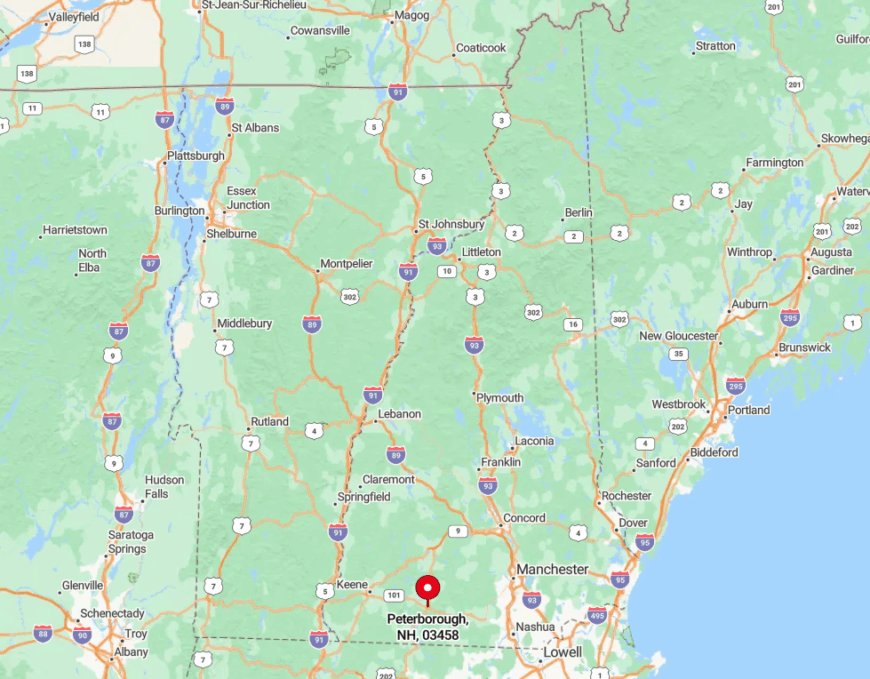
Set in the Monadnock Region of Hillsborough County, Peterborough lies at the confluence of Routes 101 and 202, about an hour northwest of Nashua and ninety minutes from Boston.
Granite hills cradle the town, with both North Pack Monadnock and Mount Monadnock less than a half-hour drive, granting rapid access to two of New England’s best viewpoints.
I usually approach via scenic Route 136 from Milford, which parallels the Contoocook River past covered bridges and farmstands. Once in town, free lots by the Community Center link directly to riverside paths and trailhead signage, so the car can stay put while adventure unfolds on foot or bike.


